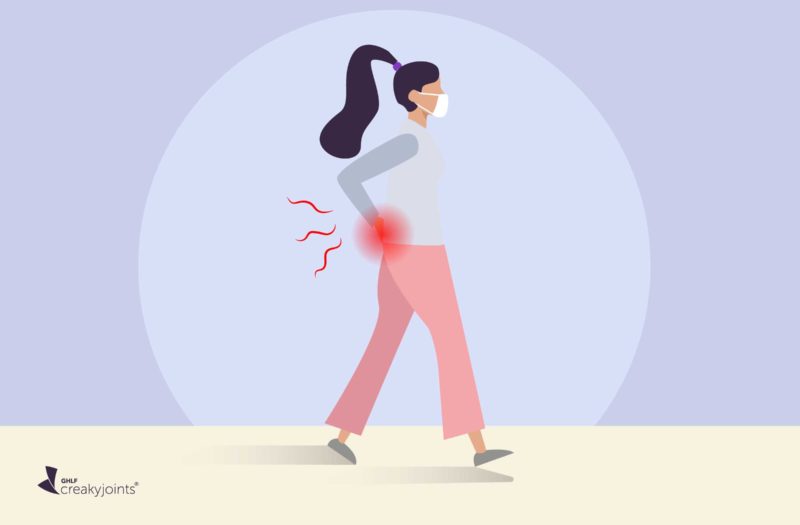Key Takeaways
- Women with axial spondyloarthritis (axSpA) tend to report higher disease activity and more trouble managing work and daily living.
- Women with axSpA were also found to have more pain, fatigue, depression, and fibromyalgia.
For many years, experts believed that axial spondyloarthritis (axSpA), a form of inflammatory arthritis that impacts the spine and sacroiliac (SI) joints, was a predominantly male disease. Thanks to newer research, that thinking has changed, and axSpA is now thought to occur at more similar rates among males and females.
But what about the impact of the disease on daily life? A new study suggests that women tend to experience more severe axSpA symptoms that impact quality of life.
Sex Differences in AxSpA Symptoms and Disease Burden
The research, which was published in The Journal of Rheumatology, looked at data on patients enrolled in the Corrona PsA/SpA Registry between March 2014 and November 2018. For purposes of this study, researchers excluded anyone who had psoriatic arthritis and only focused on the 191 women and 307 men in the registry with axSpA.
The scientists compared both groups in terms of disease activity, number of tender and swollen joints, enthesitis scores, and patient-reported symptoms such as pain and fatigue. They also analyzed information about participants’ ability to work, the types of medication required to manage their condition, and whether they had developed depression or fibromyalgia.
Disease activity was assessed using the Bath Ankylosing Spondylitis Disease Activity Index. The results indicated that women with axSpA had higher disease activity scores and were more likely to experience:
- Pain
- Fatigue
- Depression
- Fibromyalgia
- Trouble working and performing other everyday activities
“Our results are consistent with findings from prior studies,” the authors wrote, adding that peripheral joint symptoms (in the hands, arms, feet, legs) were far more common among women. “This increased prevalence of peripheral symptoms in woman is relevant, as peripheral axSpA symptoms were deprioritized in prior classification criteria,” the authors explained. Current criteria now allow for MRI diagnosis of peripheral symptoms.
It’s not entirely clear why these sex differences exist, though the authors offered several theories, including sex differences that impact inflammatory proteins in the body and “central sensitization” — which refers to how the brain interprets pain signals.
Another possibility is that men and women don’t get treated with the same medications: A previous study found that women with axSpA were less likely than men to be prescribed biologics and were more apt to be given traditional disease-modifying antirheumatic drugs (DMARDs), steroids, and muscle relaxers. Additional research is needed to understand these treatment differences.
The takeaway: If you’re a woman with axSpa, it’s important to talk to your rheumatologist to make sure your treatment is working — not only to treat symptoms but to improve your overall quality of life.
Mease PJ, et al. Comparison of men and women with axial spondyloarthritis in the us-based corrona psoriatic arthritis/spondyloarthritis registry. Journal of Rheumatology. October 2021. doi: https://doi.org/10.3899/jrheum.201549.
Walsh J, et al. Trends in diagnostic prevalence and treatment patterns of male and female ankylosing spondylitis patients in the United States, 2006–2016. BMC Rheumatology. September 2019. doi: https://doi.org/10.1186/s41927-019-0086-3.






